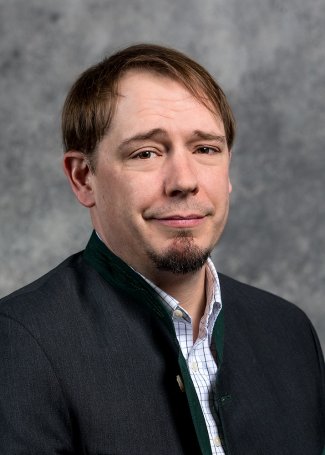Imagine a stereotypical crime scene, perhaps one from "CSI Miami." A crucial piece of evidence — a bullet, a note, a gun, etc. — is found. Where did it come from? Did it come from the perpetrator? Or did it come from the neighbor across the street? When this happens, forensic examiners must assess the likelihood the evidence came from one, or more, of the possible sources.
To quantify these likelihoods, prosecutors often rely on statisticians, like Christopher Saunders, a professor of statistics at South Dakota State University.

A former FBI laboratory visiting scientist and an intelligence community postdoctoral fellow, Saunders has been conducting research on forensic science source attribution methods since 2006. Previously, he has published research on handwriting evidence using score-based methods. Now, he will further his work on score-based statistical methods with a new project from the federal government.
Saunders will serve as principal investigator on a project funded with a $612,286 grant from the United States Department of Justice's National Institute of Justice.
"Statistical Foundations of Score-Based Methods in Forensic Identification of Source Problems" will have Saunders and his two co-PIs — Danica Ommen, an associate professor of statistics at Iowa State University, and Jack Hietpas, an assistant professor at the City University of New York’s John Jay College of Criminal Justice — extend the basic research components of score-based methods.
This work will help improve evidence interpretation when using the weight of evidence approach — a systematic approach that forensic scientists use to evaluate the totality of scientific evidence to assess if the science supports a particular conclusion. Weight of evidence approaches are needed virtually every time a piece of evidence is analyzed for its source attribution.
"What we are doing is focusing on the interpretation and presentation of evidence," Saunders said.
To quantify weight of evidence approaches during investigations, forensic scientists often use one of three statistical probability methods: the two-stage approach, Bayesian methods and machine learning or artificial intelligence methods. With some types of evidence, like handwriting, fingerprints and toolmarks, it can be a challenge to quantify probabilities using one of these methods. Instead, score-based methods are used; however, these methods are not often backed by statistically rigorous foundations.
Saunders and his research team will help improve weight of evidence approaches by developing guiding principles for applying score-based methods and providing rigorous statistical foundations for said methods.
"Our main application focus will be on evidence associated with improvised explosive devices," Saunders said. "By developing statistically rigorous methods for the probabilistic interpretation of different types of evidence contained in a single improvised explosive device, we will be able to provide an omnibus value of evidence to the decision maker."
The application of this work should enable the quantification of many evidence types, benefitting the forensic science and legal communities in both the U.S. and the world.
- Contact:
- Telephone number: 605-688-6161
Republishing
You may republish SDSU News Center articles for free, online or in print. Questions? Contact us at sdsu.news@sdstate.edu or 605-688-6161.

